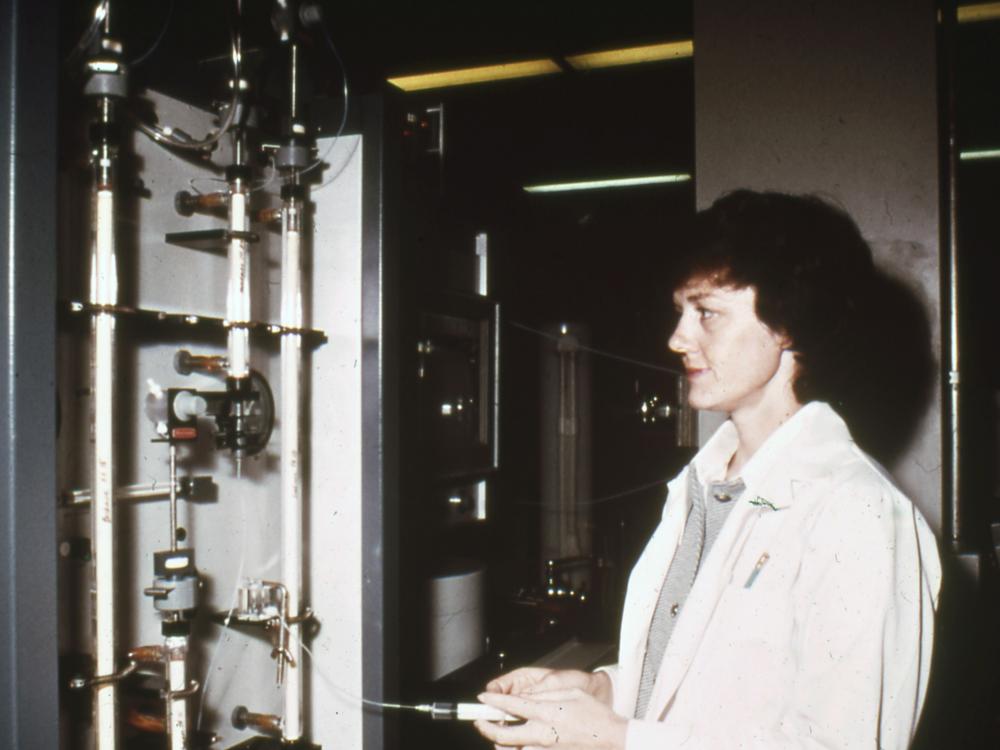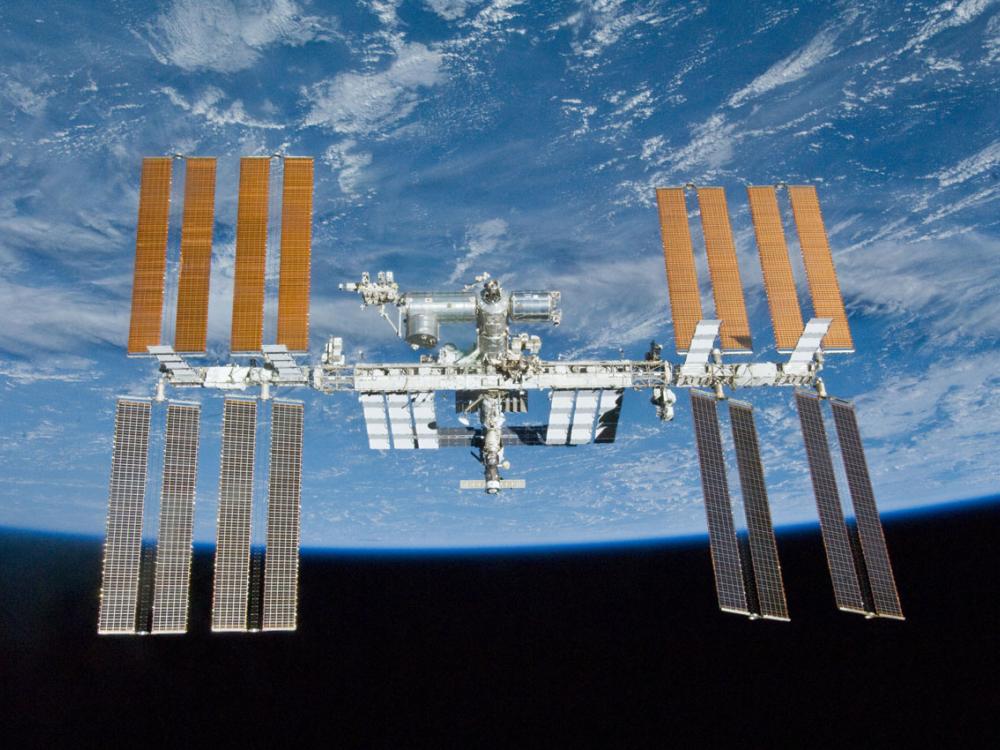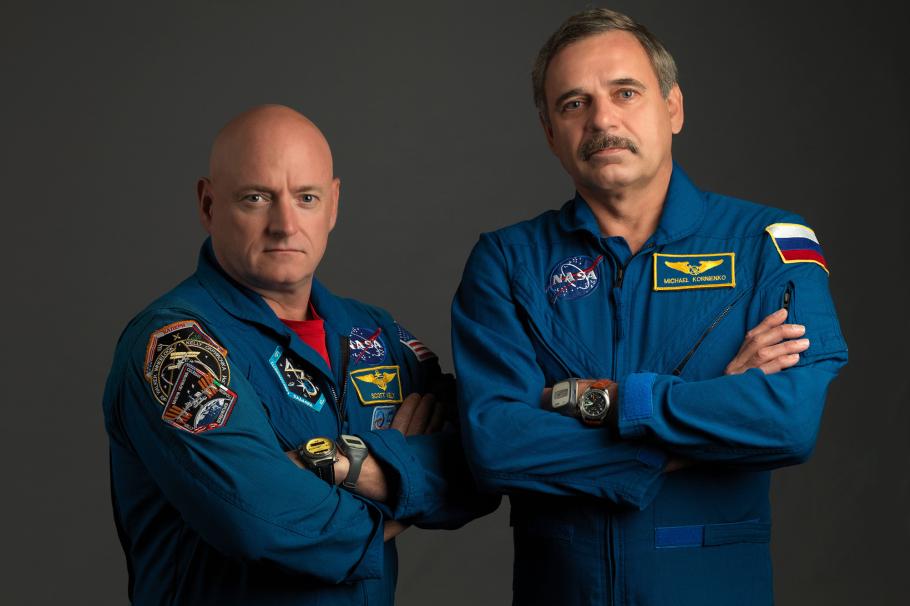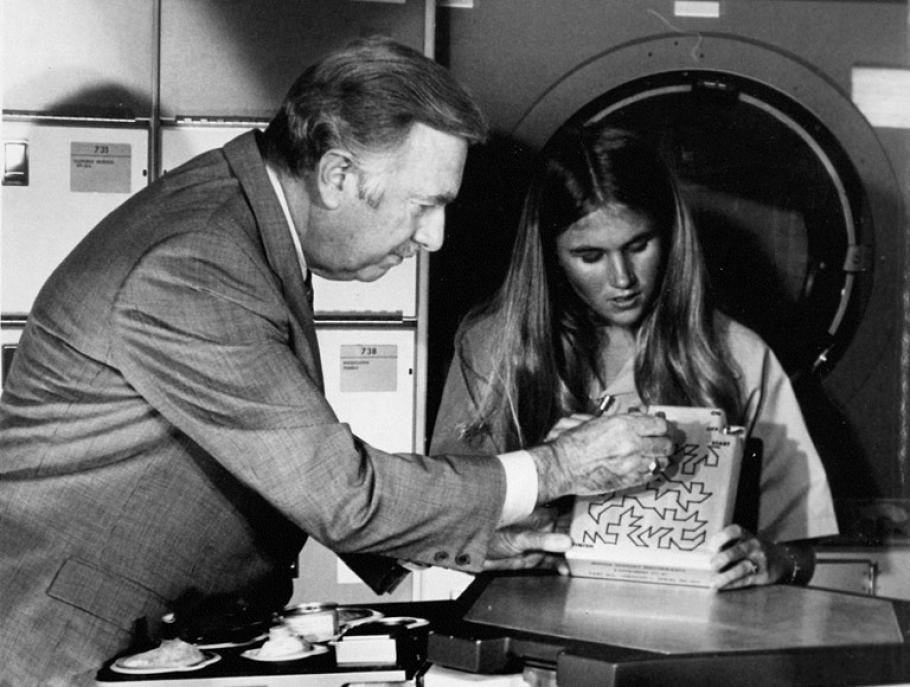
Space Stations
The Skylab missions paved the way for the creation of the International Space Station. What did we learn from Skylab? How has it improved life in space for astronauts?
Scroll down for activities to explore these questions!

Introduction to Skylab
Activity: Puffy Head Science Experiment
Astronauts on Skylab conducted many medical experiments to learn more about the effects of zero gravity on the human body. This was important information to gather so NASA could plan for future astronauts to live in space safely.
This activity mimics how a fluid shifts in a person's body when they enter space.
Step 1: Make an observation
- Take a look at these two photos of astronauts Scott Kelly and Mikhail Kornienko. What do you notice about their faces? Why do you think there is a difference?
Step 2: Mimic how fluids shift in a person's body when in space
- Find a surface like a couch or bed that you could lay on.
- Lay down on your back on this surface and hang your head over the edge so that the top of your head is pointing towards the ground.
- Stay like this for 5 minutes.
- After 5 minutes, sit up.
Scientist astronaut Joseph P. Kerwin, science pilot for the first manned Skylab mission and a medical doctor, conducted a physical exam for astronaut Charles "Pete" Conrad, Jr., the Skylab 2 mission commander. Conrad almost literally stands on his head in the weightlessness of space with only a restraint around his left leg holding in position.
Step 3: Make more observations and share them with your family.
- How did you feel when you first sat up?
- Did your nose get stuffy?
- Can you imagine what would happen when fluid shift in other parts of your body, like your legs, or your hands? How do you think your health would be impacted by this fluid shift?
One of the discoveries made on Skylab was the effect of weightlessness on the human body. Because the astronauts didn't have gravity pulling them down, all the fluids in their body travelled upwards, which lead to puffy eyes and stuffy noses.
This diagram shows the effects of microgravity on the body, although exaggerated. On the left hand side of the diagram is an illustration of an unchanged human body above the label "On ground 1G." Moving to the right, the next diagram shows a human body with more mass in the chest and upper arms, along with the caption "Initial stage in space." The third image shows a body with slightly more mass in the chest and upper arms than the first diagram, but less than the second diagram, over the label "After adjusted to microgravity." The fourth and final image is the original human body diagram over the label "Immediately after return from space."
Skylab: Timeline of Events

Panorama of Skylab Orbital Workshop
Think about it!

Spotlight Story
Dr. Carolyn Huntoon, Skylab scientist and NASA leader
Story Time and Craft Activity
The activities on Skylab paved the way for astronauts to successfully live and work in the International Space Station (ISS)! Watch this video as museum educator Ann Caspari reads the original story "Building Our Home Among the Stars," which follows the three friends—Millie, Ruth and Lou—as they build their own space station inspired by the ISS. After the story, create your own space station using recycled materials. Work together with your family members and friends, just like the astronauts do on Skylab and the International Space Station!
Materials Needed for the Craft Activity:
- Recycled materials like:
- Paper towel cardboard tube
- Plastic food containers
- Popsicle sticks
- Tissue boxes
- Tape
- Scissors
- Optional: yarn and colored paper
Let's Imagine!
Skylab astronauts had different tasks to do while on the space station—observe and learn more about the Sun, observe the Earth and take pictures of it, and conduct experiments that would help us learn more about how living in space affects the human body.
Which of these tasks would you want to do?
Make sure there is a space in your space station for doing these experiments. For example, if you want to take pictures of the Earth, what would you need to have on your space station?
Activity: Space Maze Activity
We learned many important lessons from Skylab, including how humans (and non-humans) are able to survive for long durations of time in outer space! NASA conducted many experiments to test theories on how the body would react to the stress of space. This particular experiment, created by a high school student named Kathy Jackson, was conducted to observe astronauts' motor skills. Kathy wanted to see how well and how fast the astronauts could connect the sequence of dots along the maze and whether their ability changed the longer they were in space.
Give it a try yourself! In this activity, you will create your own maze challenge and do an experiment using the maze.
Materials Needed:
- Recycled cereal, cracker box or cardstock
- Safety scissors
- Glue stick
- Permanent marker, number 2 pencil (sharpened)
- Piece of printer paper or Print out of maze image (right)
- Push Pin or pen (parental guidance advised)
- Timer or stopwatch
This Motor Sensory Performance experiment was designed by student Kathy L. Jackson of Houston, Texas.
According to NASA: "Her proposal was a very simple but effective test to measure the potential degradation of man's motor-sensory skills while weightless. Without knowing whether or not man can retain a high level of competency in the performance of various tasks after long exposure to weightlessness, this capability could not be fully known. Skylab, with its long-duration missions, provided an ideal testing situation. The experiment Kathy Jackson proposed was similar in application to the tasks involved in docking one spacecraft to another using manual control. It required one of the greatest tests of the motor-sensory capabilities of man. In March 1972, NASA and the National Science Teachers Association selected 25 experiment proposals for flight on Skylab. Science advisors from the Marshall Space Flight Center aided and assisted the students in developing the proposals for flight on Skylab."
Step 1: Prepare the maze
Option A
- Cut or trim edges of cardboard box to fit the size of the printed maze, the actual maze the astronauts used in space when conducting the experiment. (Pictured above.) You may have to trim the excess paper around the printed maze as well.
- Apply glue to either the back of the maze print off or the cardboard. (Glue sticks are recommended for faster application.)
- Press firmly on the image and wait for glue to dry.
Option B
- Draw your own maze design on a piece of cardboard using the pictured maze design for inspiration.
- Place dots in a random order.
- Then connect the dots with lines, making sure not to cross any lines.
- Mark one end as the start and one end as the finish.
Step 2: Time yourself doing the maze!
- After poking holes into each dot along the maze, the race can now begin!
- Make sure you have a pen or pencil ready.
- Ask someone to start the timer and yell "Go!" When you hear this, use the pencil to trace along the line and then push into every dot along the maze without missing or going out of order. Go as fast as you can! See how well you do!
Step 3: Make yourself dizzy and then do the maze again.
- Spin around ten times and then do the maze again, using the timer to check how long it takes to complete.
- Is your time different after spinning around?
- Skylab astronauts had to perform Kathy Jackson's maze at different times during their mission to test whether their ability changed the longer they were in space.

Explore Outside
Because of Skylab, we have another successful space station that has been in orbit since November 2000—the International Space Station (ISS). The ISS is typically the brightest thing in the sky at night, expect for the Moon. Use the tools below to learn how to spot the International Space Station in your night sky.
Is this not working? Visit the Spot The Station website to find out what time the ISS will be overhead in your neighborhood.
NASA Astronaut Randy Bresnik is preparing to head to the International Space Station and when he gets there he wants you to give him a wave from below! In this episode of ISS Science you’ll learn how you can spot the ISS.
Soar Together at Air and Space is made possible by the generous support of Northrop Grumman.
Sign up for our mailing list to get notified when more activities like this become available, learn about upcoming family days, get reminders to sign up for other family-friendly programs like virtual planetarium shows and story times, and more.








